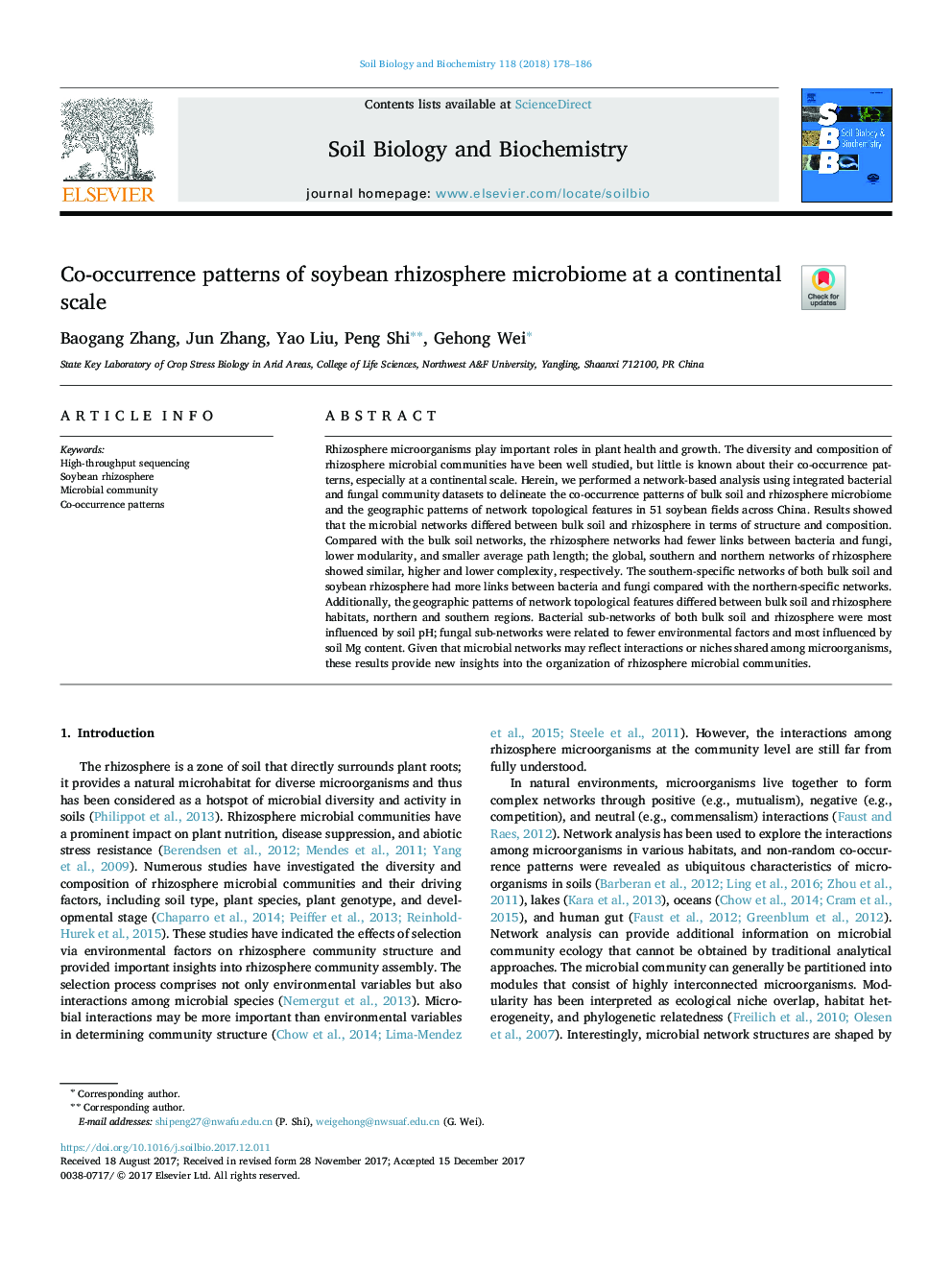| Article ID | Journal | Published Year | Pages | File Type |
|---|---|---|---|---|
| 8363016 | Soil Biology and Biochemistry | 2018 | 9 Pages |
Abstract
Rhizosphere microorganisms play important roles in plant health and growth. The diversity and composition of rhizosphere microbial communities have been well studied, but little is known about their co-occurrence patterns, especially at a continental scale. Herein, we performed a network-based analysis using integrated bacterial and fungal community datasets to delineate the co-occurrence patterns of bulk soil and rhizosphere microbiome and the geographic patterns of network topological features in 51 soybean fields across China. Results showed that the microbial networks differed between bulk soil and rhizosphere in terms of structure and composition. Compared with the bulk soil networks, the rhizosphere networks had fewer links between bacteria and fungi, lower modularity, and smaller average path length; the global, southern and northern networks of rhizosphere showed similar, higher and lower complexity, respectively. The southern-specific networks of both bulk soil and soybean rhizosphere had more links between bacteria and fungi compared with the northern-specific networks. Additionally, the geographic patterns of network topological features differed between bulk soil and rhizosphere habitats, northern and southern regions. Bacterial sub-networks of both bulk soil and rhizosphere were most influenced by soil pH; fungal sub-networks were related to fewer environmental factors and most influenced by soil Mg content. Given that microbial networks may reflect interactions or niches shared among microorganisms, these results provide new insights into the organization of rhizosphere microbial communities.
Related Topics
Life Sciences
Agricultural and Biological Sciences
Soil Science
Authors
Baogang Zhang, Jun Zhang, Yao Liu, Peng Shi, Gehong Wei,
